Stones of Silence: Unveiling the Mystic Legacy of Irish Monasticism
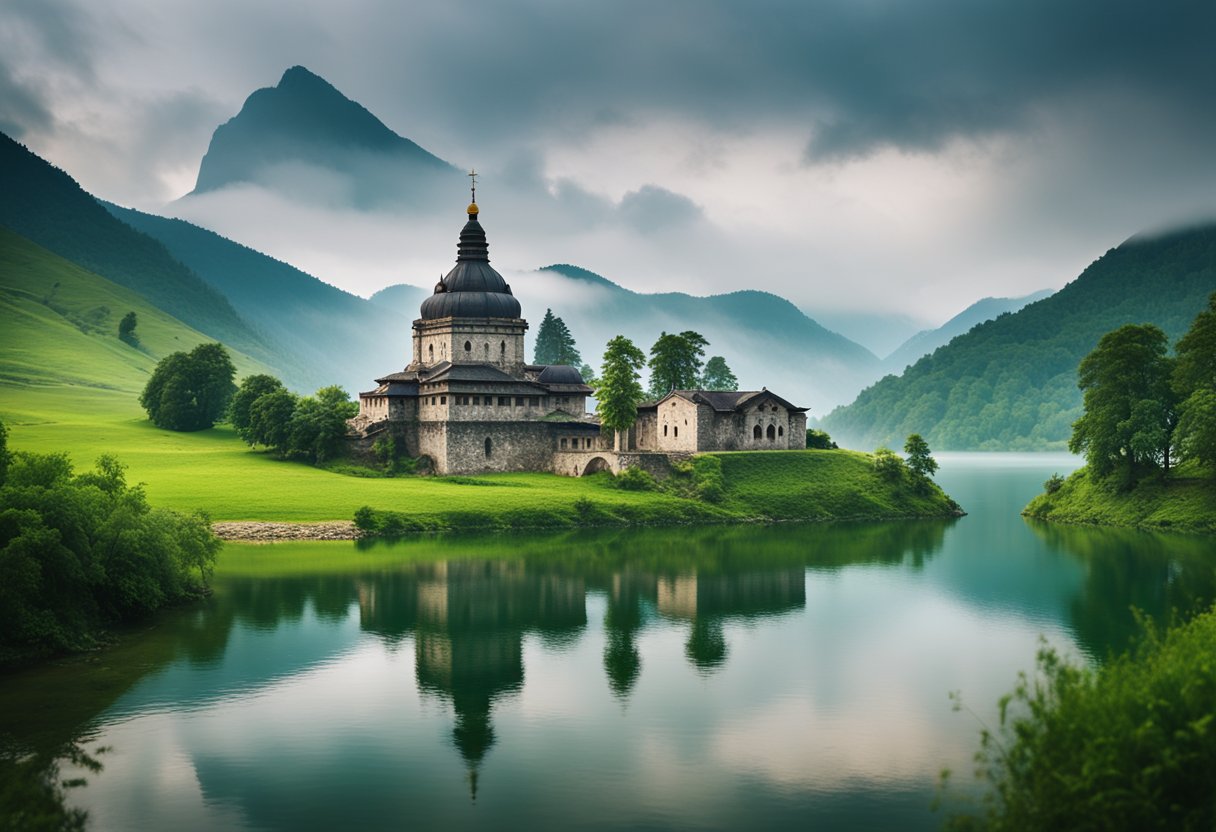
Updated On: April 23, 2024 by Eman Sameh
The early monasteries of Ireland stand as serene sentinels of spiritual dedication and repositories of cultural heritage. Irish monasticism has played a pivotal role in shaping the island’s identity and preserving the echoes of its Christian legacy, from the hushed stone cells of hermits to the vibrant scriptoria of scholars. Established in remote and often austere environments, these beacons of contemplation and learning have been instrumental in maintaining a continuous thread of faith and education through the centuries.

Their walls, often ruined now, whisper tales of the unique brand of monasticism practised between the windswept Atlantic and the Irish Sea. The monastic movement in Ireland, with St Finnian of Clonard heralded as its traditional founder, provided a blueprint for community living that intertwined labour, prayer, and study. Beyond their spiritual significance, Irish monasteries were centres of exceptional artistry, with illuminated manuscripts like the Book of Kells serving as testimony to the aesthetic and intellectual zenith reached by these early communities. Today, remnants of their labour stand both as monuments to a profound heritage and as symbols of the resilience of cultural expression, having withstood the battering forces of time and history.
Irish Monasticism Heritage
We shall explore the significant rise of monasticism in Ireland and its indelible contributions to the Early Irish identity.
Emergence of Monasticism in Ireland
Monasticism began to flourish in Ireland during the 5th century with the introduction of Christianity to the island. The Irish monastic tradition evolved uniquely, partly due to Ireland’s geographical isolation. Saint Patrick, amongst other missionaries, played a pivotal role in the spread of Christian monasticism, establishing communities that were dedicated to a life of religious contemplation, education, and manual labour.
These early monastic sites were characterised by their simple yet architecturally significant structures, such as the Gallarus Oratory, which is renowned as the best-preserved Celtic stone church. The solitary and austere nature of Irish monks differed from continental practices, with a tendency towards eremitical life—monks inhabiting secluded beehive-shaped huts and monasteries featuring distinctive round towers.
Contributions to Early Irish Identity
Irish monasticism made profound contributions to the culture and society of early Ireland. Monks and scribes were instrumental in preserving Latin and Christian texts, including the creation of illustrious manuscripts like the Book of Kells. Monasteries acted as centres of learning, attracting scholars from across Europe, which led to Ireland being known as the “Island of Saints and Scholars.”
The spiritual practices and community life within these monasteries also served to unify the various clans and tribes, fostering a sense of a distinct Irish Christian identity. The impact of Irish monasticism on culture, education, and politics was enduring – the monks not only preserved knowledge during the Dark Ages but also significantly influenced the Christianisation of Scotland and mainland Europe.
Spiritual Foundations
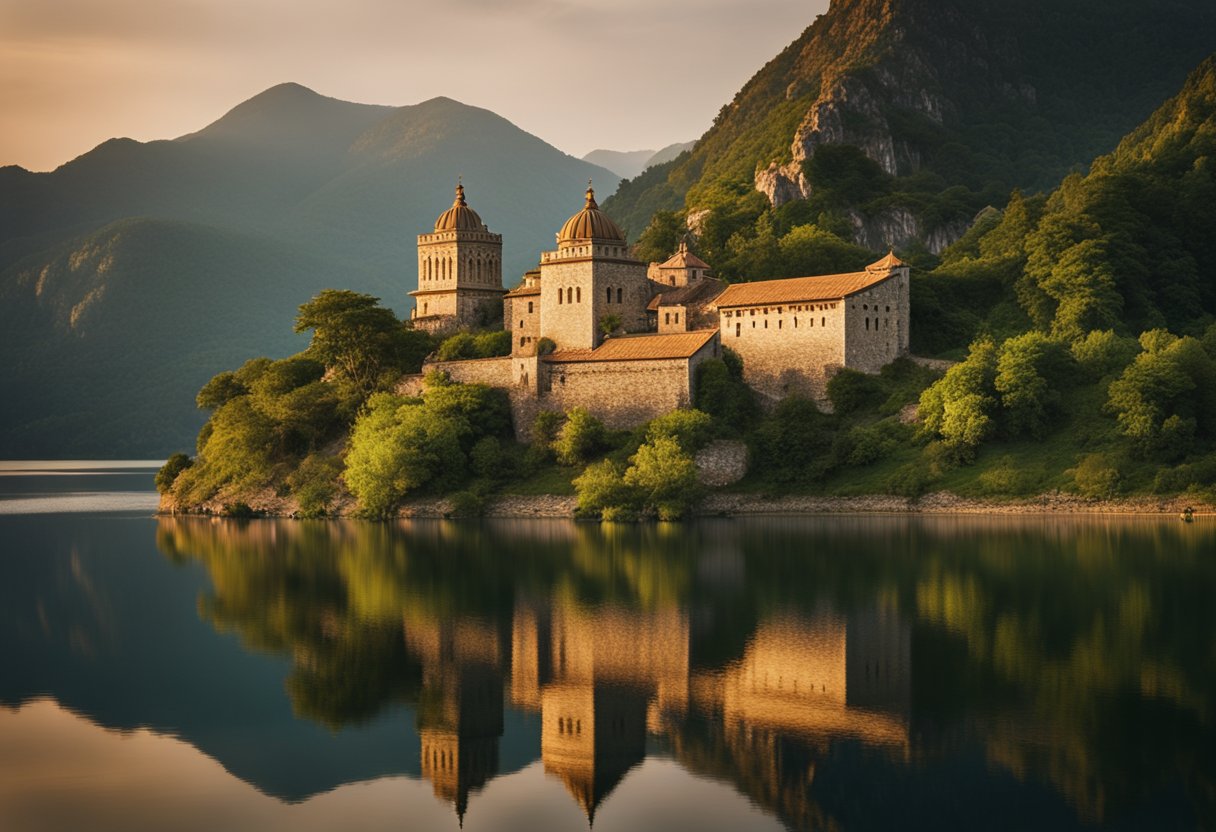
In the pursuit of a closer connection with the divine, early Irish monasteries established themselves as centres not just of religion but also of deep spiritual significance. Monasteries fostered an atmosphere conducive to contemplation and conversion through their dedication to monastic prayer and ritual life.
Monastic Prayer and Ritual Life
The spiritual life of early Irish monasteries was firmly rooted in prayer and ritual. Daily life revolved around the Divine Office, a series of prayers recited at specific times. Monks would gather to chant psalms and offer prayers for the Church and the world, a practice vital to communal monastic spirituality.
- Saints: Esteemed figures, such as St. Columba, played a crucial role in the spiritual character and daily rituals of these communities. Their legacies were marked by both their holiness and their impact on the conversion of others.
- Contemplation: Silent meditation and private prayer were integral, allowing monks to delve into the mysteries of faith and to foster a personal connection with God.
- Conversion: The monasteries also served as beacons of faith, drawing in those seeking transformation. The solemnity of ritual and the rhythm of prayer offered a compelling example to laypeople aspiring towards spiritual growth.
By embracing these spiritual foundations, early Irish monasteries resonated as places of serenity and strength, dedicated not only to the faith but to a profound understanding of the divine through structured religious practice.
Architecture and Artistry
Early Irish monasteries hold a special place in history, standing as remarkable feats of spiritual dedication and artistic expression that have withstood the test of time. We now delve into their architectural genius and artistic beauty.
Construction and Design of Irish Monasteries
We find the earliest monastic sites in Ireland were often simple in design, contrastingly using materials available in their immediate environment. Initially, wood was the primary resource, but a pivotal moment came with the introduction of stone construction, symbolising permanence and reverence. The transition from wood to stone distinctly marked the evolution of monastic architecture, materialising in the robust walls and intricate stone designs of these ecclesiastical sites.
The layout generally included a core church or oratory and living accommodations arranged within an enclosure, reflecting both the environmental adaptations and liturgical requirements of the time. Monasteries like Skellig Michael, with its crafted stone terraces, illustrate the monastic commitment to creating self-contained worlds removed from secular life.
The Stone Churches and High Crosses
When exploring the stone churches within these monasteries, ones such as the Gallarus Oratory in County Kerry immediately come to mind with their corbelled roofs and smooth, sloping walls. The engineering ingenuity behind these structures allowed them to survive Ireland’s harsh weather, and they continue to be centres of intrigue for their architectural stability and mystical charm.
Adjacent to these spiritual abodes stood the High Crosses, masterpieces of artistry laden with biblical tales and intricate Celtic patterns. These crosses were not purely functional; they were didactic sermons in stone, meant to instruct and guide the illiterate masses. Carving such intricate designs into stone demonstrates the high skill level of craftsmen of that time – a tangible legacy of the monasteries’ role in preserving and fostering the arts.
Our monastic heritage is prominently showcased by these surviving architectural wonders. They serve as a testament to the ecclesiastical, cultural, and artistic achievements of a bygone era.
The Role of Monasteries in Society
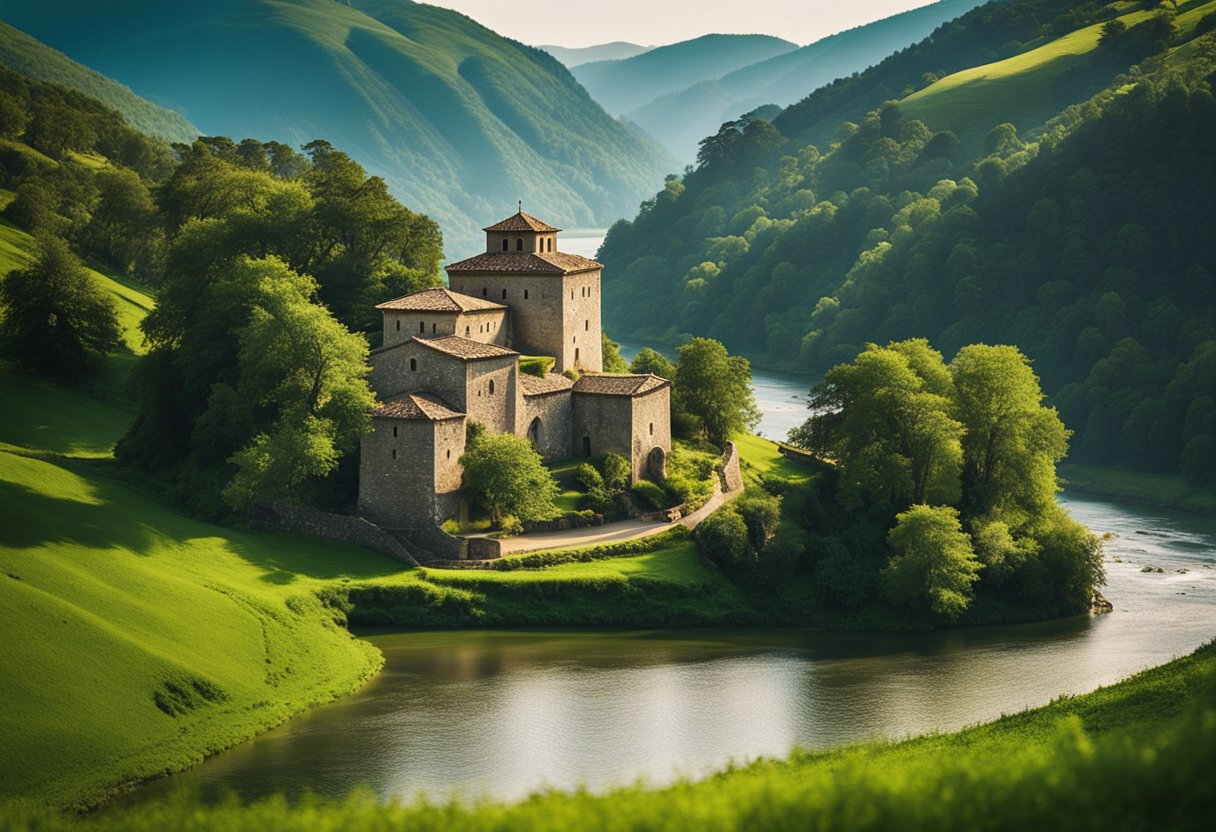
Monasteries were pivotal centres of spiritual life and secular influence. They were also powerhouses of economic strength and intellectual growth during the early Irish Christian period.
Economic and Political Influence
Monasteries amassed considerable wealth and power through donations and protection agreements with the nobility. They owned vast tracts of land and were involved in large-scale agrarian production and trade, contributing significantly to local and regional economies. These institutions often wielded political sway, engaging in complex relations with the state and lay society. For example, many of the great landowning monasteries played a substantial role in the Byzantine Empire’s society and economy.
Centres of Learning and Literature
Monasteries served as centres of learning, where scholarly activities prevailed. A focus on the preservation and production of literature in Latin established them as the primary cultural and intellectual hubs. Monastic schools fostered literacy and produced works such as the Book of Kells, a masterpiece of calligraphy and symbolism. The transcription and study of classical texts maintained a continuity of knowledge, ensuring that the wisdom of authors like Cicero, Virgil, and Aristotle preserved the classics of ancient literature.
Legacies of Saints and Scholars
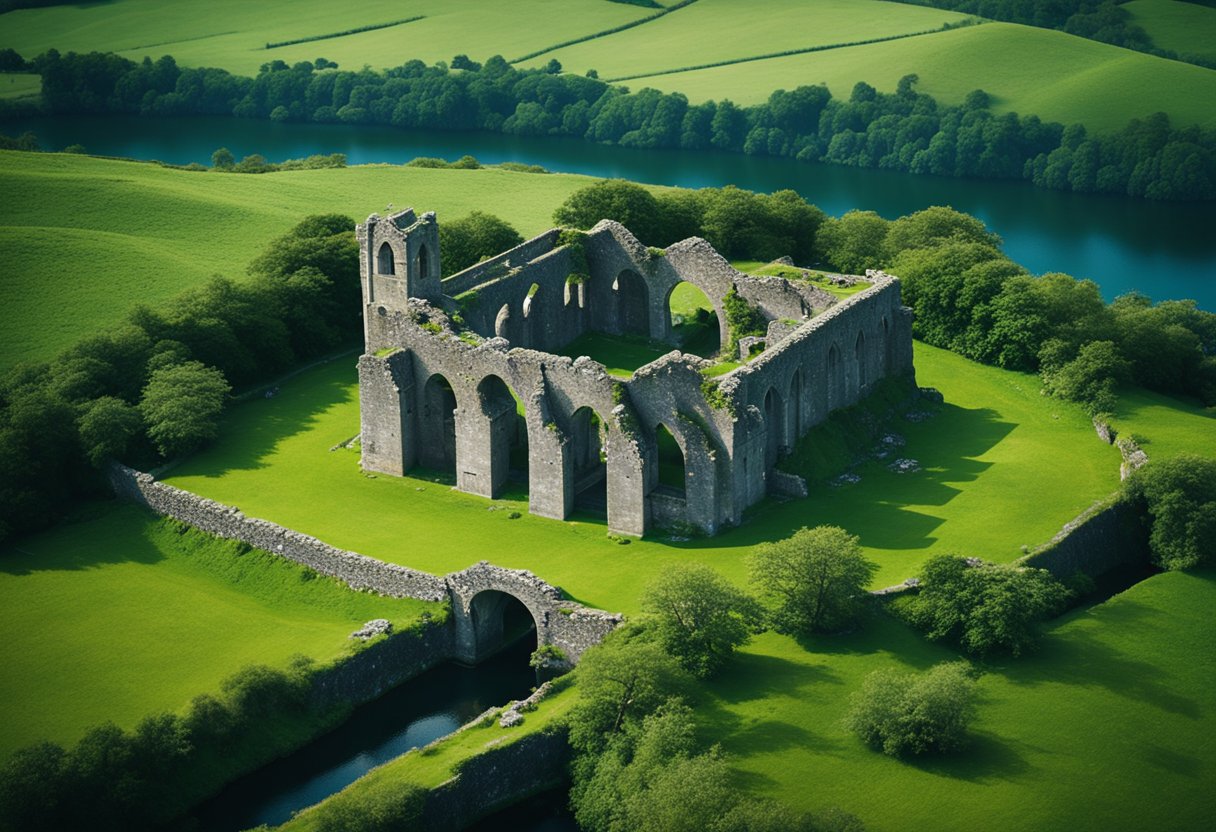
Early Irish monasteries played a pivotal role in shaping the cultural and spiritual identity of Ireland, leaving an indelible mark through the influence of prominent figures such as St. Patrick and St. Brigid. Their contributions to the spread of Christianity and the establishment of monastic communities resonate to this day.
St. Patrick and the Spread of Christianity
St. Patrick is celebrated for his missionary work in the 5th century, which was instrumental in the widespread adoption of Christianity across Ireland. His efforts facilitated the emergence of numerous monastic establishments that became centres of religious study and scholarship. Renowned institutions like the monastery on the Isle of Iona were founded by his disciples, extending his legacy far beyond Ireland’s shores.
St. Brigid and Monasticism in Kildare
St. Brigid, one of Ireland’s patron saints, founded the monastery of Kildare around 470 AD. As a beacon of monasticism and learning, it attracted a multitude of scholars and devout Christians. This dual monastery for men and women not only favoured spiritual contemplation but also pursued extensive scholarship. Its influence helped solidify Ireland’s reputation as the “Land of Saints and Scholars.”
Monasticism Across the Isles
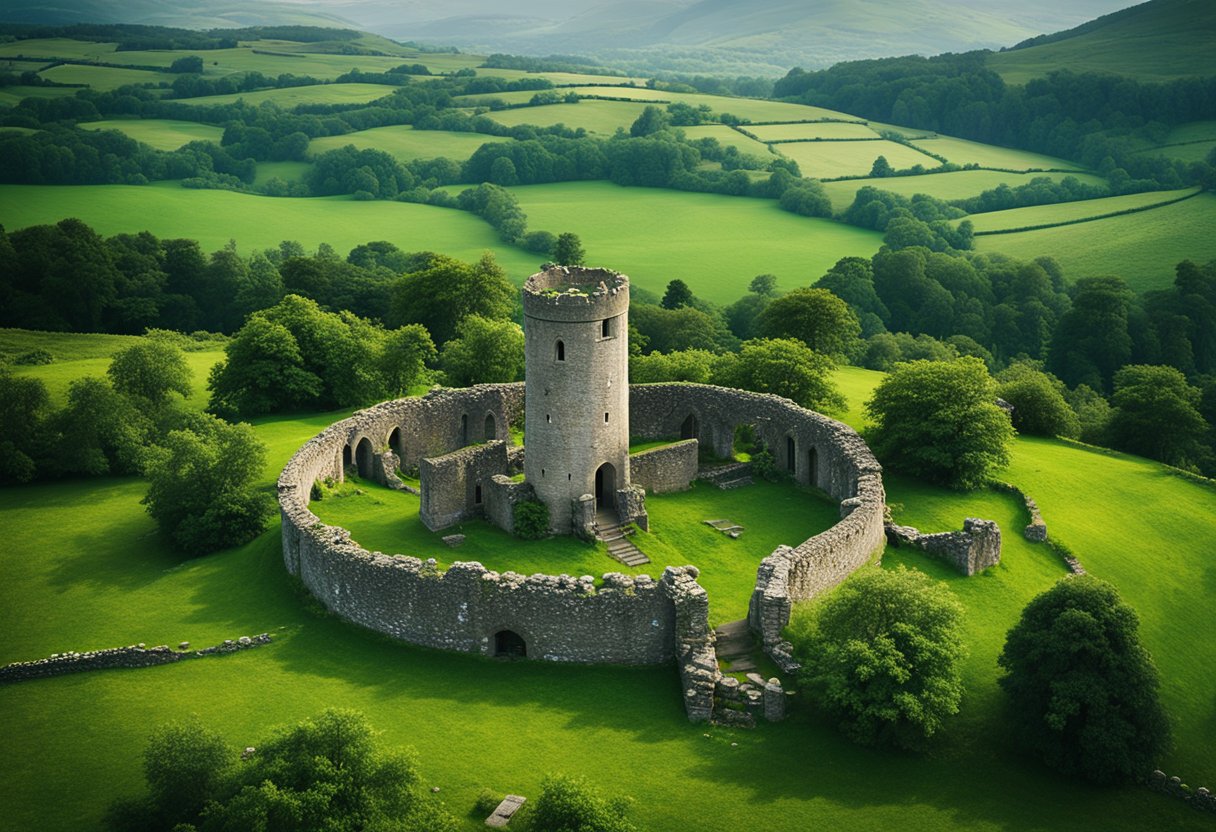
Monastic life has profoundly shaped the cultural and spiritual landscape of the British Isles, leaving an enduring legacy that spread across Europe.
Irish Influence on European Monasticism
Monasticism has roots that delve deep into Ireland’s past, serving as a beacon of spiritual fervour that radiated well beyond its shores. Ireland’s monasteries, known for their ascetic practices, became flourishing centres of learning and devotion, playing a pivotal role in the preservation and dissemination of Christian thought. Through interactions with European territories, Irish monasticism left a significant impact, particularly during the 6th and 7th centuries.
One can scarcely speak of European monasticism without acknowledging the Irish monks, whose missions and pilgrimages to areas such as Scotland, Wales, and the broader region of Britannia seeded monastic fervour. Their stations, or monastic settlements, were crucial in the conversion and cultural exchange with the Picts and other tribes.
In Wales, the influence of Irish monasticism was seen in places like St David’s, where rigorous religious practices were established. Further north, the Scottish isles felt the firm imprint of Irish monastic principles, many of which had been shaped by the insular context and distinct approach to monastic life that Irish Christianity fostered.
As Irish monks ventured into Mainland Europe, they founded monasteries, adapted their practices to new contexts, and connected with local populations. Their contributions to European monasticism can be seen particularly in areas such as Bavaria and Switzerland, where they helped to found influential monastic centres.
The tapestry of British and Irish monasticism is richly interwoven with the continent’s own threads, creating a rich mosaic of spiritual heritage that touched various corners of Europe.
Notable Monastic Sites
We journey through the spiritual landscapes carved by centuries of monastic dedication, exploring sites like Glendalough and Clonmacnoise, which stand as testaments to the religious fervour and monastic tradition of ancient Ireland.
Historical Significance of Glendalough and Clonmacnois
Glendalough, or the Valley of the Two Lakes, is not merely a scenic retreat. Founded by St. Kevin in the 6th century, this early Irish Christian monastic settlement has been a significant pilgrim site within Ireland’s Ancient East. The monastic city at Glendalough encapsulates the remnants of history, including the iconic round tower, a cathedral, and several churches, which reveal the community’s pursuit of religious scholarship and devotion.
Clonmacnois is another stellar example of Ireland’s spiritual heritage. Situated at the crossroads of medieval trade routes across Ireland, it flourished as a centre for religion, learning, craftsmanship, and trade. Its scriptures and high crosses, as a central point of prayer and social organization, symbolize how monasticism shaped Ireland.
Other Noteworthy Sites
- Clonard: Vital for its famous monastery, founded by St. Finnian in the 6th century, was a leading centre of religion and learning.
- Bangor: Renowned as an ecclesiastical centre, its monastery, established by Saint Comgall in 558 AD, became a beacon of learning in Europe.
- Aran: Known for the monastic ruins scattered across its rocky terrain, the islands exemplify the Christian monasticism that thrived on the fringes of European civilisation.
- Tuam: Once home to a significant cathedral and monastic complex, it signifies the spread of monasticism across various parts of Ireland.
Preservation of Heritage
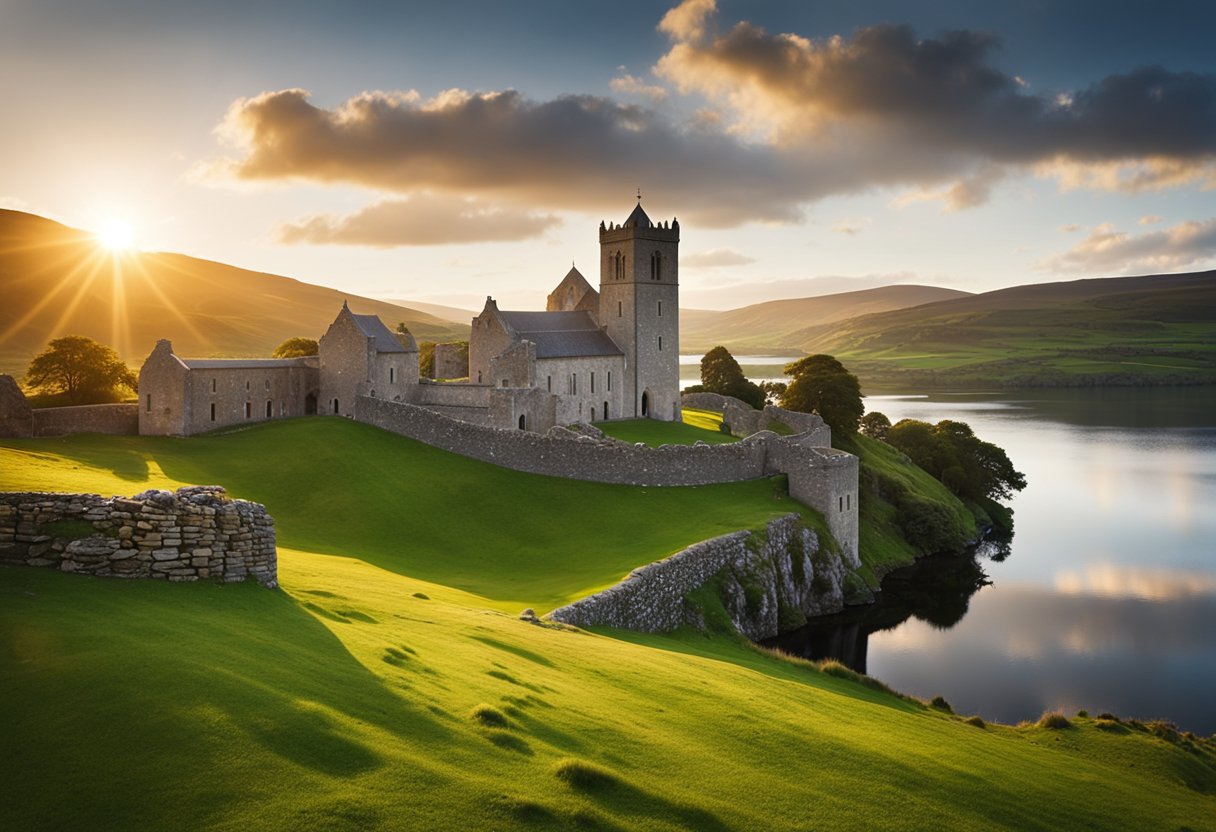
As we explore the spiritual and historical significance of early Irish monasteries, it is crucial to recognise the role that preservation of heritage plays. Protecting the relics and edifices from this period is essential to maintaining the cultural memory that connects us to our past.
Artefacts and Remains as Cultural Memory
Throughout the Early Middle Ages and the Middle Ages, monastic sites served as hubs of memory where sacred texts and gospels were preserved, copied, and shared. They became foundational in retaining the wisdom from which current generations benefit. Stones from these ancient constructions whisper tales of devotion and provide us with invaluable insights into the spiritual lives led within their walls.
Preserving these artefacts is key to safeguarding the spiritual narrative interwoven in Irish history. For instance, intricately carved stones with Celtic motifs unearthed at these sites are not merely decorative; they represent a lexicon of symbols reflective of a rich Christian heritage. The maintenance and careful handling of these stones ensure that the silent sermons encoded within them endure.
Monastic sites from the Early Middle Ages are treasure troves of artefacts ranging from gospel books to the remnants of stone high crosses. By conserving these physical testimonies, we uphold the memory of a time when spirituality was paramount and learning was revered.
We must preserve these keystones of heritage for future generations so they, too, may be able to trace the contours of our spiritual ancestry. By doing so, we not only honour the legacy of our forebearers but also enrich the cultural fabric of the present day.
Pilgrimage and Reverence

Pilgrimage has long been a cornerstone of spiritual expression in Irish monastic history, providing a tangible path for worshippers to express their faith and reverence for saints such as St. Columba, St. Kevin, and St. Columban.
Continued Spiritual Practice in Modern Times
We can still observe the practice of pilgrimage today, showcasing its enduring significance in modern spirituality. Pilgrimages offer a unique blend of historic devotion and contemporary spiritual undertaking. For example, the journey to Croagh Patrick, a place of ancient pilgrimage in honour of St. Patrick, remains a popular annual pilgrimage, where thousands climb the mountain reflecting on their faith, seeking solace or penance.
Moreover, the sites associated with St. Columba and St. Kevin continue to draw visitors searching for a sense of peace and spiritual renewal. These sacred places are steeped in the prayers and traditions of centuries, resonating with a powerful sense of continuity in religious practice. It is here that historical reverence and modern spirituality intersect, inviting pilgrims to partake in a time-honoured tradition that remains as relevant today as it was hundreds of years ago.
The Monastic Legacy in Contemporary Ireland

In modern Ireland, ancient monastic sites continue to resonate, transforming from secluded spiritual havens into celebrated historical attractions.
From Spiritual to Secular: The Transformation of Sites
Once the beating heart of Irish monastic life, locales such as Cork and Limerick now find their monastic heritages integrated into the fabric of contemporary society. These sites, revered for their role in preserving knowledge and culture during the early Middle Ages, stand today not only as solemn reminders of a spiritual past but also as points of secular interest.
Tourist footfall at these hallowed grounds reflects a shift from religious pilgrimage to cultural tourism. The metamorphosis of these monasteries into attractions underscores Ireland’s adeptness at preserving heritage sites while repurposing them as tourism drivers. Guests from around the globe stream through the ruins, eager to walk in the footsteps of monks of yore.
Through this, Ireland capitalises on a unique alchemy of historical reverence and modern curiosity, ensuring that the echoes of monastic devotion continue to infuse our present-day experience. The ongoing interest in these sites demonstrates our collective yearning to connect with the profound spirituality and rich history that shaped our nation.
Frequently Asked Questions

In this section, we address some of the most common inquiries about the pivotal role and enduring legacy of early Irish monasteries.
What significance did Irish monasteries hold during the medieval period?
During the medieval era, Irish monasteries were revered as central hubs of religious fervour and spiritual guidance. They served as beacons of Christianity throughout Ireland and became pillars of community life.
How did early Irish monasteries contribute to European culture?
Irish monasteries significantly influenced European culture by becoming centres of learning, where they fostered knowledge in the arts and literature. Remarkably, they were known for their prolific scriptoria, where monks would meticulously copy texts, thereby preserving academic and religious works for future generations.
What role did monastic communities play in Ireland’s spiritual landscape?
Monastic communities in Ireland shaped the country’s spiritual landscape by establishing sacred sites often intertwined with Celtic customs. They acted as custodians of faith and moral righteousness, integrating Christian practices with traditional Irish beliefs.
In what ways were Irish monasteries seats of learning and preservation of knowledge?
Irish monasteries were recognised as illustrious seats of learning, where monks excelled in manuscript production. They preserved a wealth of knowledge spanning theological, scientific, and cultural domains, playing a vital role in what is often regarded as the land of saints and scholars.
Can you detail the circumstances leading to the decline of monastic institutions in Ireland?
The decline of monastic institutions in Ireland can be traced back to a convergence of factors, including Viking raids, Norman invasions, and the subsequent English conquests, all of which diminished their influence and led to the redistribution of ecclesiastical power.
What architectural features distinguish early Irish monastic sites?
Early Irish monastic sites are distinguished by their unique architectural features, including high crosses, round towers built as places of refuge and bell towers, and the iconic beehive huts where monks resided. These structures reflect the ingenuity and resilience of the monastic communities.






